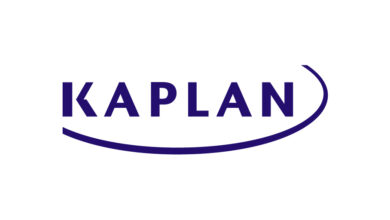Global 5G Network Slicing Market Report 2023: Revolutionizing Connectivity – Market Set to Reach $5.3 Billion by 2028 – ResearchAndMarkets.com

DUBLIN–(BUSINESS WIRE)–The “5G Network Slicing Market by Infrastructure, Spectrum Band, Segment, Industry Vertical, Application and Services 2023 – 2028” report has been added to ResearchAndMarkets.com’s offering.
This report evaluates enabling technologies and the market outlook for 5G network slicing. The report provides market opportunity analysis including Configuration Management, Performance Management, Service Level Agreements, and more. The report also includes 5G network slicing by specific use cases such as Smart Manufacturing, which includes Remote Monitoring, Supply Chain Management, Asset Management, Real-Time Monitoring, and Network Monitoring.
In addition, the report provides an assessment of major segments such as 5G network slicing in consumer, enterprise, and industrial IoT. The report includes global forecasts for each area covered as well as regional estimates for 5G network slicing by segment, RF band, applications, and industry verticals through 2028.
As networks become increasingly more complex, we see service providers taking a more intent-based networking approach to network management. Accordingly, leading carriers are incorporating various forms of network optimization such as network slicing into their OSS/BSS capabilities. This will be particularly important with 5G as the use cases for future applications and services are many and varied in terms of type, industry vertical focus, and requirements.
5G network slicing enables a highly programmable multi-service architecture, which consists of three layers (1) Service Instance Layer, (2) Network Slice Instance Layer, and (3) Resource Layer. One important architecture component is the Slice Selection Function (SSF), which handles device attach requests and new service establishments.
5G standalone, the base on which network slicing is built, will enable game services the right performance end-to-end (E2E) unlike 4G or Wi-Fi. E2E network slicing enables new business model innovation and use cases across all verticals, and creates new revenue opportunities for communication service providers. It provides service flexibility and ability to deliver services faster with high security, isolation, and applicable characteristics to meet the contracted SLA.
The SSF selects an optimal slice based on user information, device type, and capabilities. This supports one of the important goals of radio access management, which is to support configuration rules for each slice. 5G network slicing also allows for core networks to be logically separated in terms of connectivity and network capabilities. Separation of the control plane and user plane is a key aspect of the 5G network slicing market, allowing resources to be scaled independently.
One of the opportunities for carriers is to leverage 5G network slicing for new business development by way of expanded capabilities for virtual network operators (VNO). Since 5G network slicing enables multiple logical networks to act in an independent manner operationally, a VNO could support many different types of customers including consumers, enterprise, and industrial businesses.
A network slice could be completely different for a consumer using an eMBB application versus an industrial URLLC application. For example, 5G network slicing allows for isolation of bandwidth, processing, storage, and Traffic. This allows resources to be allocated for QoS-specific needs.
Perhaps one of the most promising areas for carriers is to leverage 5G network slicing market capabilities to offer dynamic slicing with differentiated pricing based on customer needs and resource availability. Factors to consider for each slice allocation include bandwidth availability, latency support, and overall network elasticity to scale to customer needs. Additional factors that determine value and cost to the customer include network homogeneity, connection density, and type of connection.
Select Report Findings:
- 5G network slicing market will reach $5.3 billion globally by 2028
- Global 5G slicing professional services will reach $414.2 million by 2028
- North America will lead the 5G slicing market followed by Asia Pac and Europe
- Network slicing management will reach $29.7 million by 2028 in North America
- Enterprise will lead the market but smaller organizations will grow 50% faster than corporations
- Collaboration among system integrators, vendors, and carriers is key to the long-term success of 5G network slicing
- Leading carriers will work diligently to extend trust and build relationships with vertical partners to optimize 5G solutions
- A key market segment, private wireless networks will require substantial vertical engagement to ensure 5G slicing is meeting their needs
- There is a keen need for service providers of all types (Carrier, Managed Service, Business User) to coordinate with application providers
Key Topics Covered:
1 Executive Summary
2 Introduction
2.1 Network Slicing
2.2 Enabling Technologies
2.3 Software-Defined Networks
2.4 Network Function Virtualization
2.5 SDN and NFV Synergies for 5G Service Classes
2.6 Related Technology: Edge Computing
3 5G Network Capabilities and Requirements
3.1 The Road to Fifth-Generation Wireless
3.2 5G Technology, Capabilities, and Challenges
3.3 5G Applications and Services by Segment
3.4 5G Consumer Applications
3.5 5G Business Applications
4 5G Network Slicing Market Dynamics
4.1 Drivers
4.1.1 Availability of Affordable High-Speed Network Services
4.1.2 Growing Penetration of Smartphones and Increasing Data Traffic
4.1.3 Smart Cities Driving Adoption of IoT Devices across Industry Verticals
4.2 Challenges
4.2.1 Mobility Management:
4.2.2 Network Slicing Security Issues
5 5G Network Slicing Market Use Cases
5.1 Virtual Reality and Augmented Reality
5.2 Automotive
5.3 Healthcare
5.4 Power Grid
5.5 Sports
6 5G Network Slicing Market Analysis and Forecasts
6.1 Global Market Forecast 2023 – 2028
6.2 Total 5G Network Slicing Market
6.3 5G Network Slicing Market by Segment
6.3.1 5G Network Slicing Technology Market
6.3.2 5G Network Slicing RF Components Market
6.3.3 5G Network Slicing Service Market
6.4 5G Network Slicing Market by RF Spectrum Bands
6.5 5G Network Slicing Application Market
6.5.1 5G Network Slicing Consumer IoT Application Market
6.5.2 5G Network Slicing Enterprise/Industrial IoT Application Market
6.5.2.1 5G Network Slicing Smart Manufacturing Application Market
6.6 5G Network Slicing Market by Industry Vertical
6.7 Regional Market Forecast 2023 – 2028
6.8 5G Network Slicing Market by Region
7 5G Network Slicing Company Analysis
7.1 Cisco Systems, Inc.
7.1.1 Company Profile
7.1.2 Product Portfolio
7.1.3 Recent Developments
7.2 Telefonaktiebolaget LM Ericsson
7.3 Huawei
7.4 Nokia
7.5 Intel
7.6 Samsung
7.7 ZTE
7.8 Telefonica SA
7.9 Deutsche Telekom AG
8 Conclusions and Recommendations
9 Appendix: Edge Computing
9.1 Edge Computing Market Deployment
9.2 Edge Computing Operational Considerations
9.3 Mobile Edge Computing and Network Slicing
For more information about this report visit https://www.researchandmarkets.com/r/pk56ym
About ResearchAndMarkets.com
ResearchAndMarkets.com is the world’s leading source for international market research reports and market data. We provide you with the latest data on international and regional markets, key industries, the top companies, new products and the latest trends.
Contacts
ResearchAndMarkets.com
Laura Wood, Senior Press Manager
[email protected]
For E.S.T Office Hours Call 1-917-300-0470
For U.S./ CAN Toll Free Call 1-800-526-8630
For GMT Office Hours Call +353-1-416-8900




